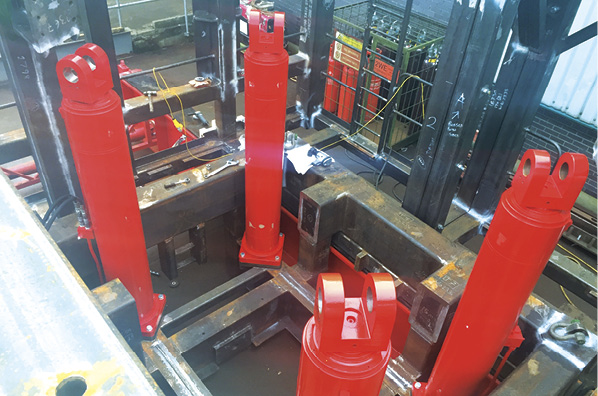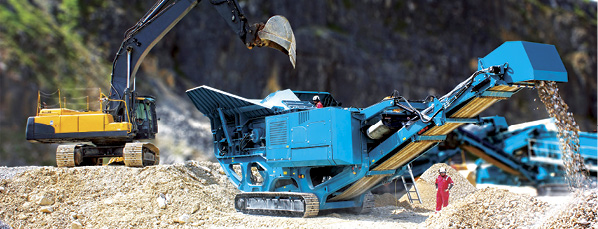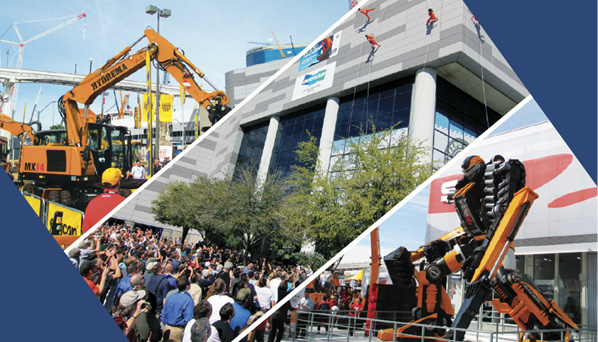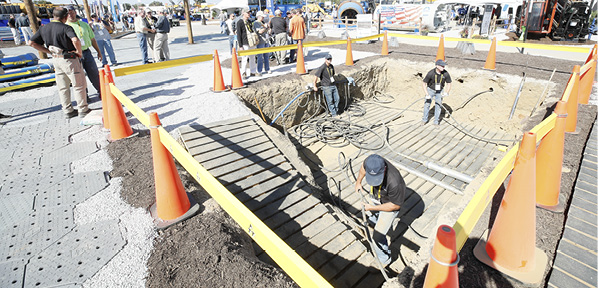Double Acting Telescopic Cylinder Halves Oil Rig Decommissioning Time
By Steven North, Design and Project Engineer, Apex Hydraulics Ltd

Dismantling expired oil rigs is a costly and time-consuming operation. After decades in the water, the rigs need to be decommissioned and scrapped, in an environmentally safe way. Once an oil rig is no longer used for oil production, it starts to lose money rapidly. Personnel are still being paid to work and live on the rig and costly safety measures continue to be adhered to; but the rig itself is making no money since no oil is being produced from it. Therefore, reducing the time it takes to dismantle the rig is of huge financial benefit to oil companies.
An oil rig can be made up of hundreds of thousands of tons of metal that has been constructed and added to over the space of up to 25 years. These huge structures, robustly built to withstand decades of abuse from wind and waves, pose a significant challenge to dismantle. Of course, allowing the metal to rust and fall into the sea is not an option, from either an environmental or safety point of view. Instead, the metal is all taken to shore for scrappage.
When dismantling the oil rig, one of the most time-consuming parts of the process is removing the riser system. Risers are the pipes, cemented into the sea bed, through which the oil is drawn to the surface.
Client’s Commission
A large offshore engineering company approached Apex Hydraulics for hydraulic cylinders to fit an innovative new fabrication, designed for their specialist oil rig de-commissioning services. Their unique modular conductor recovery system provides a swifter, more efficient way of removing deep sea risers weighing up to 300 metric tons, without the need for a jack up rig.
The system they designed was to be capable of lifting the pipes by a huge 40 ft for each cut. In spite of this large lift distance, the machinery needed to remain compact. They commissioned the manufacture of a number of telescopic, dual action hydraulic cylinders that would halve the time it takes to lift the riser.
Solution: Double Acting Telescopic Cylinders
The cylinders that lift the risers need to have a powerful dual action. After the hydraulic fluid forces the advance of the cylinder rod to lift the riser, the weight of the riser is held by other means. The cylinders are base flange mounted and stand vertically.Therefore there is no weight mechanism to push the rod back into the retract position,and the cylinders need to be double acting so that that they can be hydraulically operated back into the retract position. This is known as a double acting hydraulic telescopic cylinder.

This cylinder has a rod within a rod, allowing the stroke of the hydraulic cylinder to be double that of a normal (non-telescopic) cylinder. Since this is a telescopic cylinder there are 2 bore sizes and 2 rod sizes: 300/220 bore X 260/180 rod. The working pressure in this application is 200 bar, and the hydraulic fluid is Aqualink 300F – biodegradable subsea control fluid. (Although constant speed was not used on these cylinders, it is an option for future orders or designs.).
A More Efficient System
The riser is cut at the seabed by a jet of environmentally friendly, water-based cutting fluid that is piped down the hole. At this point, one part of the recovery system grips the riser, while the telescopic cylinders advance to their full length, pulling the riser out of the water by twice that of a standard subsea cylinder. The second part of the recovery system then holds the riser in place. At this point the cylinders are fully retracted, allowing the process to be repeated. The piles are cut in 40 ft lengths.


With this innovative recovery system and with the aid of Apex’s double acting telescopic cylinders, the riser can be lifted twice as far each time. This is a huge benefit to the oil companies, which can massively decrease their costs by decommissioning their oil rigs in far less time.
The hydraulic cylinders have been DNV-GL approved. This third party insurance group has witnessed all manufacture, pressure testing and certification, meaning that this rentable tool can be used in the decommissioning of numerous rigs across various companies, saving large amounts of time and resources.
For more information, visit www.apexhydraulics.co.uk.







